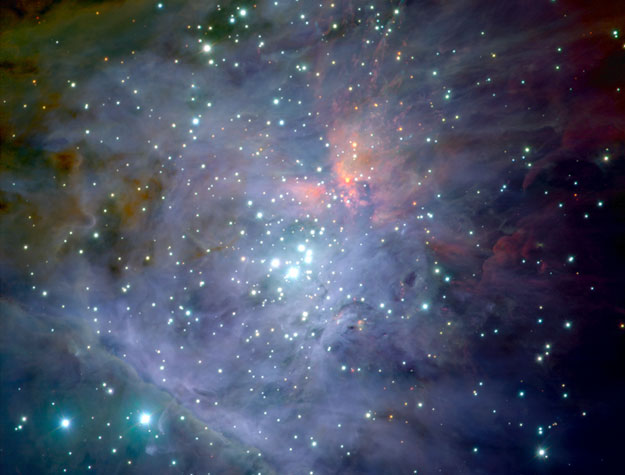
|
Explanation: The Great Nebula in Orion is a colorful place. Visible to the unaided eye, it appears as a small fuzzy patch in the constellation of Orion. But this image, a representative-color composite of 81 near-infrared light images taken with VLT's ISAAC, shows the Orion Nebula to be a busy neighborhood of young stars, hot gas, and dark dust. The power behind much of the Orion Nebula (M42) is the Trapezium - four of the brightest stars in the nebula. The eerie blue glow surrounding the bright stars pictured here is their own starlight reflected by nearby dust. Dark brown dust filaments cover much of the region. The whole Orion Nebula cloud complex, which includes the Horsehead Nebula, will slowly disperse over the next 100,000 years.
|
January February March April May June July August September October November December |
| ||||||||||||||||||||||||||||||||||||||||||||||||
NASA Web Site Statements, Warnings, and Disclaimers
NASA Official: Jay Norris. Specific rights apply.
A service of: LHEA at NASA / GSFC
& Michigan Tech. U.
Based on Astronomy Picture
Of the Day
Publications with keywords: Orion Nebula - trapezium
Publications with words: Orion Nebula - trapezium
See also:
- Orion and the Running Man
- APOD: 2025 August 13 Á Trapezium: In the Heart of Orion
- APOD: 2025 April 20 Á The Orion Nebula in Visible and Infrared
- APOD: 2024 November 4 Á M42: The Great Nebula in Orion
- APOD: 2024 September 10 Á Horsehead and Orion Nebulas
- Trapezium: At the Heart of Orion
- APOD: 2023 October 10 Á Hidden Orion from Webb
